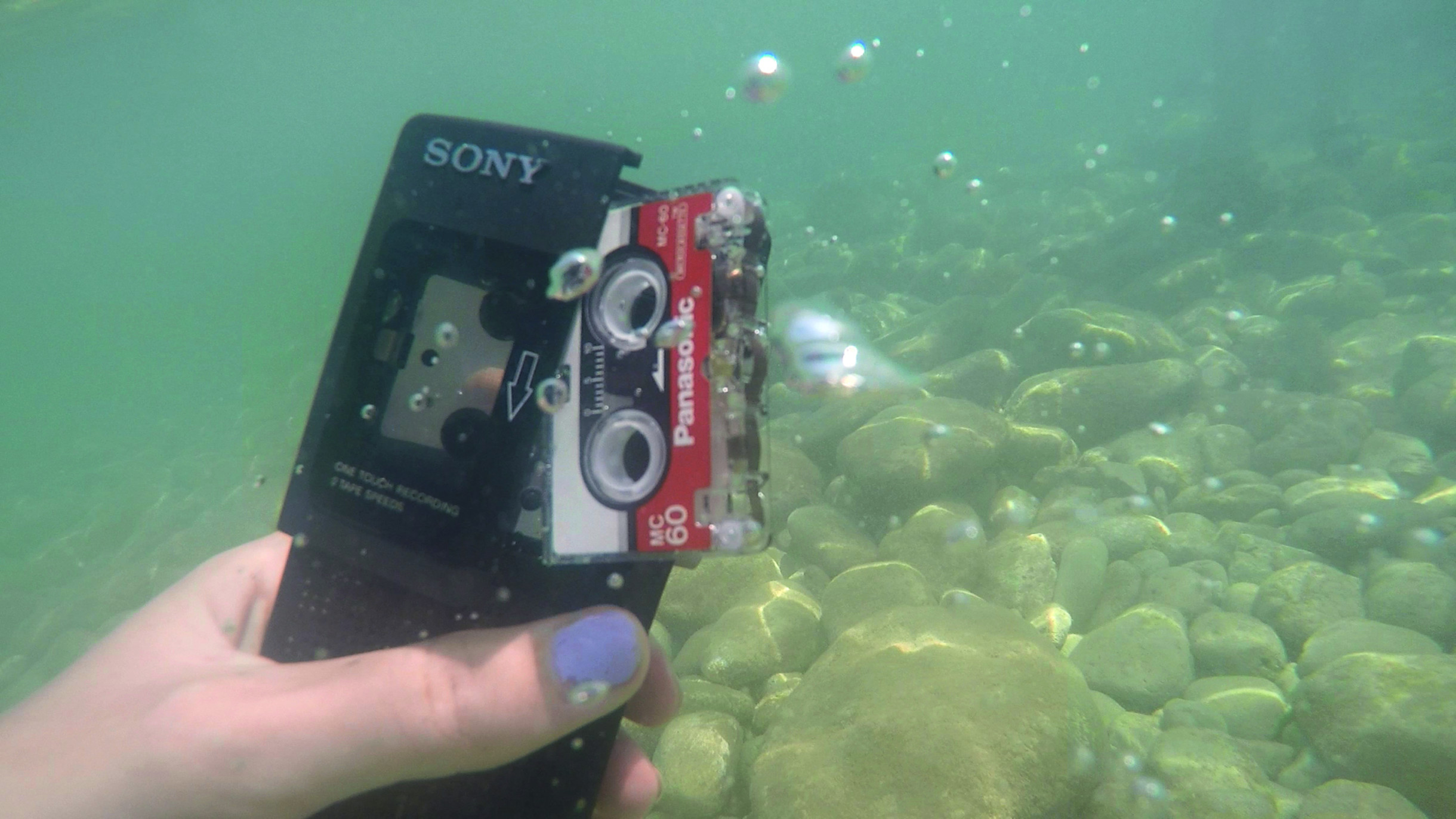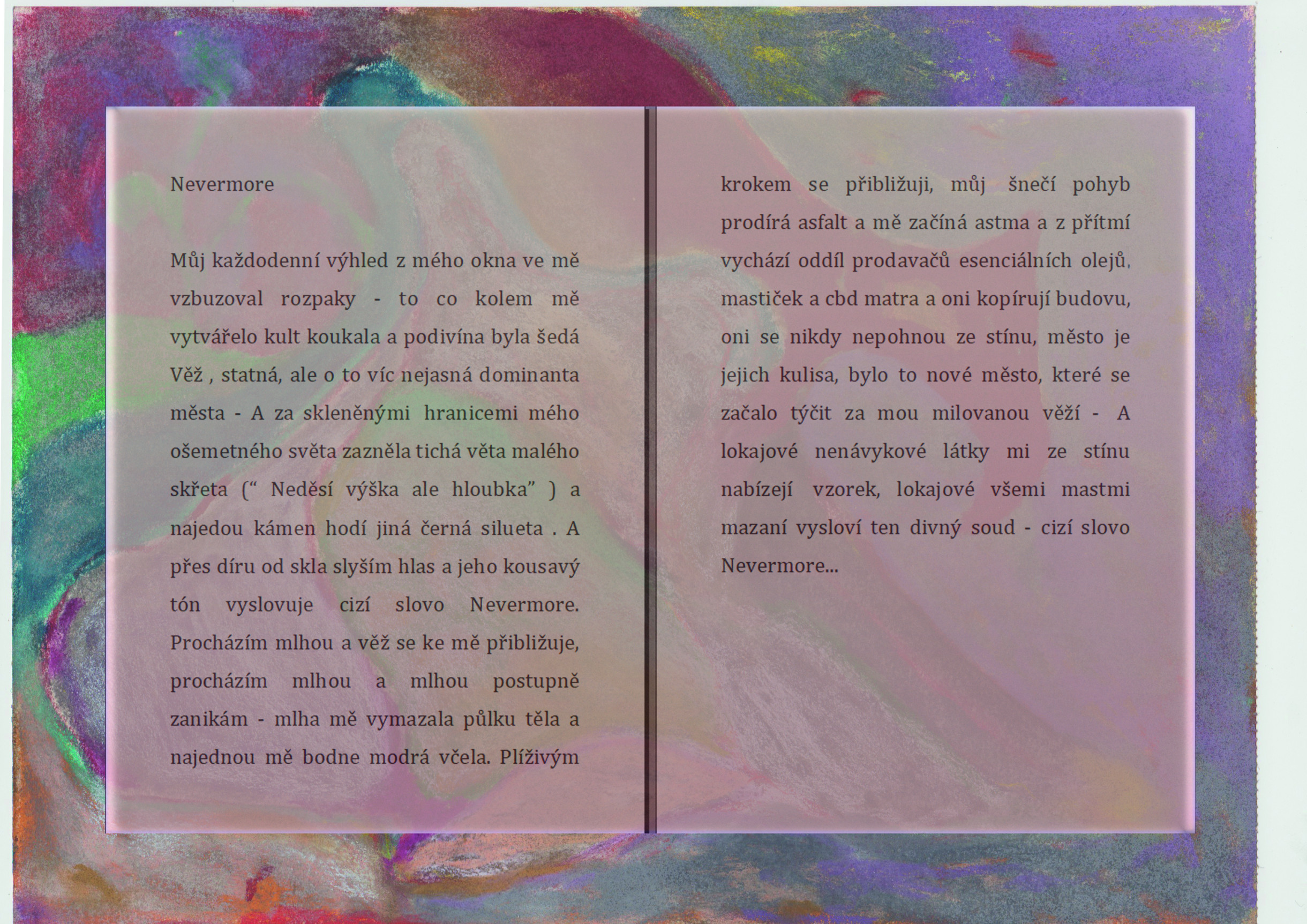Laura Trenčanská↓
Gallery
Links
Studies
| 2018–2021 | Painting 2, AVU (Vladimír Skrepl) |
| 2019–2020 | New Media 1, AVU (Tomáš Svoboda) |
| 2017 | stáž na FaVU VUT, ateliér Video |
| 2014–2017 | FaVU VUT, Intermédia |
| 2015–2016 | stáž na CAS FAMU |
About the work
Nevermore
Laura Trenčanská’s diploma thesis, entitled Nevermore, loosely follows in her most recent authorial video essay, Glow!, which organically fuses recorded material and a textual component. Instead of adhering to specific subjects or conceptual approaches, the artist is interested in the untranslatable nature of meanings, symbols and games with words as well as visual and audio perceptions, trying to capture the specific atmosphere that intertwines the installation. She thinks of the text as a material, which then becomes part of the installation.
During the final year of her studies, Trenčanská moreover turned to the media of drawing and painting. They serve her to record the path she is drawn to via a story originating simultaneously with the installation.
The Nevermore text is a psychedelic meta-chaos transformed and varied by the artist – the entire scenery of the story can change in a second. Her work in painting represents a reverse process; the artist does not illustrate the story’s scenery but records the text in an abstract way, creating surfaces and fighting a foggy smudge which she enlarges and reduces, and emphasizing various details (flowers, a part of a shoe, stars). Similarly as she modulates a word and lyrically develops, humanizes and treats it via slang and a complex manner. Recently, Trenčanská also fell for retro aesthetics in relation to the texts she writes – she almost hypnotically chants them into an analog recorder seen in the video. The Nevermore text refers to one of Edgar Allan Poe’s most popular essays, The Philosophy of Composition, which summarizes the theoretical principles of his poetic work and lengthily discusses his well-known poem (one of the most famous poems ever), The Raven. The artist works with this kind of “cliché” deliberately – and perhaps in a sentimental, post-modern way.
Trenčanská’s installation is a specific room – an experimental lo-fi laboratory, a simple spiral maze, a space that you can see, dart through or listen to it. The 1970s’ hallucinogenic music produced by the green-surf Jaguar guitar strangely floats in the space. And then, you suddenly hear a voice coming from a hole in the glass, and its biting tone utters a foreign word, “Nevermore”.

